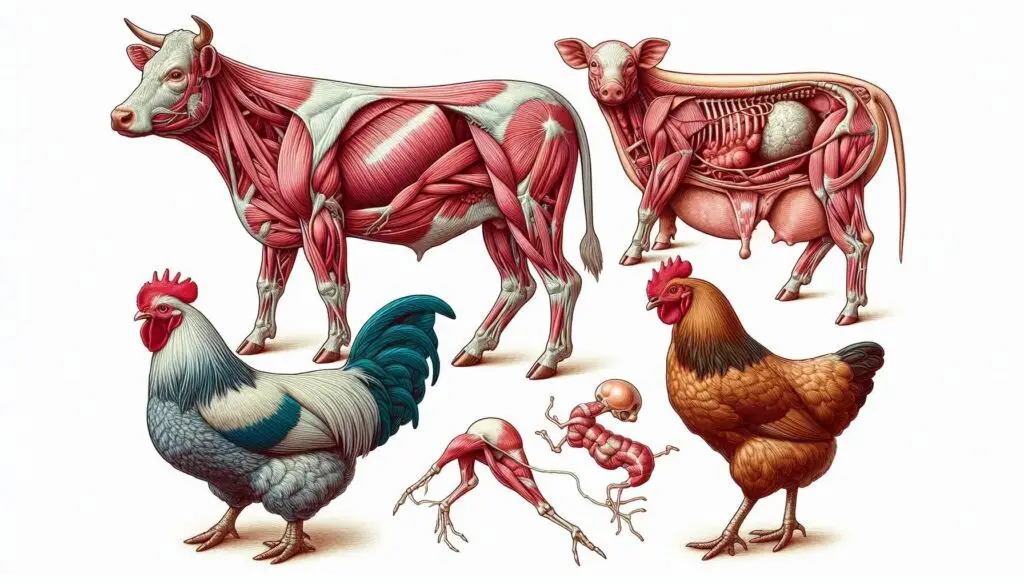Endometriosis in Cattle

Endometriosis, commonly referred to as endometritis in cattle, is a significant reproductive health issue that affects dairy cows, particularly during the postpartum period. This condition involves inflammation of the endometrium and can lead to various complications in reproductive performance. Understanding the causes, symptoms, diagnosis, treatment, and prevention strategies for endometritis is essential for maintaining herd health and productivity.
Overview of Endometritis
Endometritis is characterized by inflammation of the uterine lining and can be classified into two main types: clinical endometritis and subclinical endometritis. Clinical endometritis presents with observable symptoms such as purulent vaginal discharge and systemic illness, while subclinical endometritis often goes unnoticed without regular veterinary checks.
Types of Endometritis
Clinical Endometritis
This form of endometritis shows clear symptoms. Cows may exhibit signs such as:
- Foul-smelling discharge from the vagina.
- Fever or other systemic signs of illness.
- Decreased milk production due to illness.
Subclinical Endometritis
This type is more challenging to detect since it does not present obvious symptoms. Diagnosis typically requires veterinary intervention. Tools such as the Metricheck™ device can help identify pus in vaginal discharge, indicating infection.
Causes and Risk Factors
Several factors contribute to the development of endometritis in cattle:
Bacterial Infections
Bacteria are a primary cause of endometritis. Common pathogens include:
- Escherichia coli
- Trueperella pyogenes
These bacteria often proliferate in the uterus following calving.
Calving Complications
Complications during calving significantly increase the risk of developing endometritis. Factors include:
- Retained placenta: When the placenta does not expel naturally after calving.
- Dystocia: Difficult or prolonged labor that may introduce bacteria into the uterus.
- Twin births: Increased stress on the cow can lead to complications.
Nutritional and Environmental Stressors
Poor nutrition and inadequate management practices can exacerbate the risk of endometritis. Key factors include:
- Body Condition Score (BCS): Cows with low BCS are more susceptible.
- Hygiene practices: Unsanitary conditions can lead to infections.
Diagnosis
Diagnosing endometritis involves several methods:
Metricheck™ Device
This tool collects samples from the vagina to assess for pus. A score of 2 or higher indicates infection.
Rectal Examination
Veterinarians may perform rectal exams to assess uterine health and identify abnormalities.
Uterine Biopsy
In complex cases, a biopsy may be necessary to evaluate tissue health.
Treatment Options
Effective treatment strategies for endometritis generally include:
Antibiotic Therapy
Intrauterine antibiotics are commonly administered to treat infections. The choice of antibiotic depends on the specific bacteria identified.
Prostaglandin Treatments
These treatments help manage hormonal imbalances and stimulate estrus in affected cows.
Phytotherapy
Some studies suggest that herbal treatments (e.g., garlic, neem) may provide benefits in managing endometritis.
Prevention Strategies
Preventive measures focus on improving overall herd management:
Transition Period Management
Effective management during the transition period before and after calving is crucial to minimize stress and health complications.
Body Condition Optimization
Maintaining an optimal BCS can reduce the risk of infections post-calving.
Hygiene Practices
Ensuring cleanliness during calving and postnatal care can help prevent bacterial contamination of the uterus.
Conclusion
Endometriosis (endometritis) in cattle poses significant challenges for dairy farmers due to its impact on reproductive performance and economic viability. Understanding its causes, symptoms, diagnosis, treatment, and prevention can help mitigate its effects on cattle health and productivity. For further reading on this topic, consider visiting reputable sources such as The Merck Veterinary Manual or The University of Minnesota Extension.
More from Animal Reproduction:
https://wiseias.com/chemical-physical-properties-semen/
https://wiseias.com/semen-preservation-artificial-insemination-livestock/
https://wiseias.com/artificial-insemination-farm-animals/
https://wiseias.com/advantages-of-artificial-insemination-farm-animals/






Responses